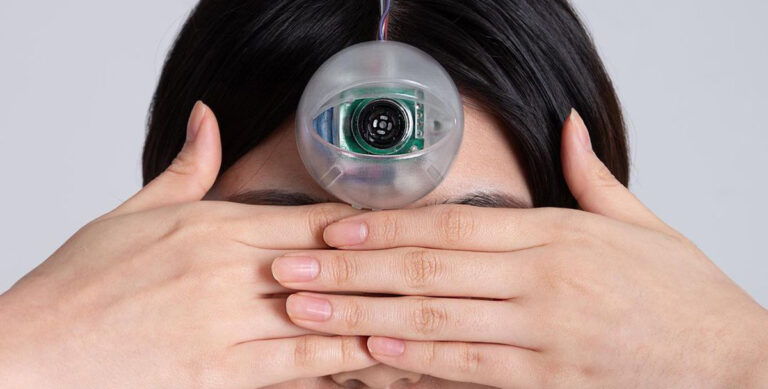Are you a ‘smartphone zombie’? This might be the piece of tech you need
Minwook Paeng, a 28-year-old postgraduate student in innovation design engineering at the Royal College of Art and Imperial College, has designed the piece of tech that will save us from the shackles of our smartphones. The designer has created a solution to what he describes as “smartphone zombies.” Don’t lie, you know the ones. They’ve probably bumped into you a few times because their eyes were glued to their phone screen. Or maybe it’s you—no judgement here. It might also be me. Sometimes.
Paeng has the fix—a giant robotic eyeball you strap to your forehead. Yeah, you read that right. This just sounds like the beginning of a Black Mirror episode. “This is the look of future mankind with three eyes,” Paeng said in an interview and demonstration of his product with Reuters. Do you think you could rock this look?
View this post on Instagram
Paeng calls it ‘The Third Eye: Evolution to Phono Sapiens.’ The device is designed to prevent “smartphone zombies” from injuring themselves on the go. The promo video on Instagram describes this as “a problem caused by the angle of view. When we look down at the smartphone, we are not able to look forward. So, I evolved to have the ‘third eye’.” But how does it actually work?
The designer explains that the translucent eyelid opens when the wearer’s eyesight is lowered to their phone; the device will beep if the user is within a few metres of an impending obstacle—alerting them of the danger. Once the user lifts their head, the eyelid will close. Paeng’s invention is able to do this through two significant parts. One: a gyro sensor that is able to accurately measure the angle of the wearer’s neck, and two: an ultrasonic sensor that can effectively calculate the distance between an obstacle and the user.
View this post on Instagram
Demonstrating his invention on the streets of Seoul, South Korea, Paeng’s device caught the attention of many pedestrians. One resident, Lee Ok-jo, had this to say about the bizarre look, “I thought he looked like an alien with an eye on his forehead.” However, they expressed a positive attitude to the functionality of the device, “These days many young people can get into accidents while using their mobile phone. This would be good for them.”
View this post on Instagram
If you haven’t realised by now, Paeng’s project is a satirical, intelligent and critical perspective. It so effortlessly dances between its clever design and humorous perspective on our relationship with our smartphones. The designer writes on Instagram, “This project is not just a common product design, but more of an ironic or critical design. Through ‘The Third Eye’, I hope people can criticise our behaviours and rethink about ourselves evolving to Phono Sapiens than resolve the problems we encounter in the present.” He expressed the same sentiments with Reuters, “By presenting this satirical solution, I hope people recognise the severity of their gadget addiction and look back at themselves.” So, you might want to put your phone down for a bit. Well after you finish reading us of course.





